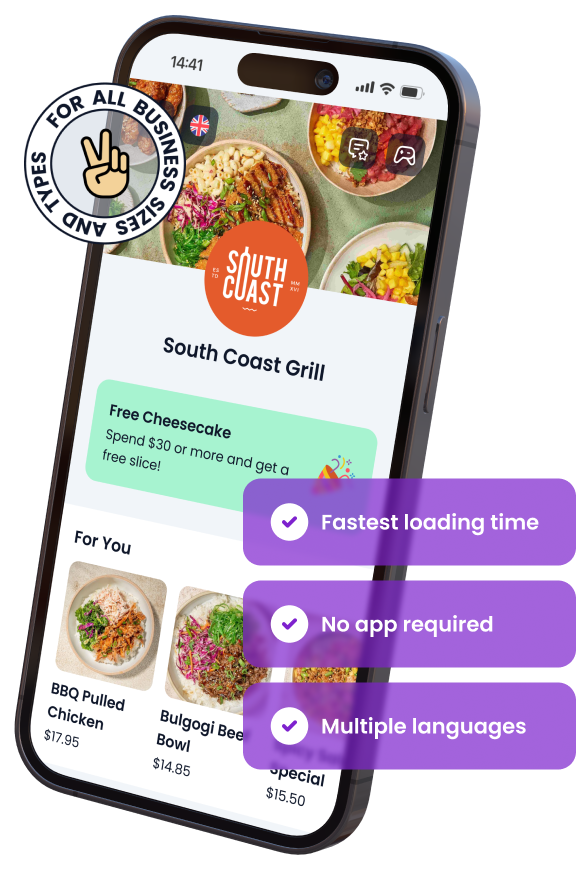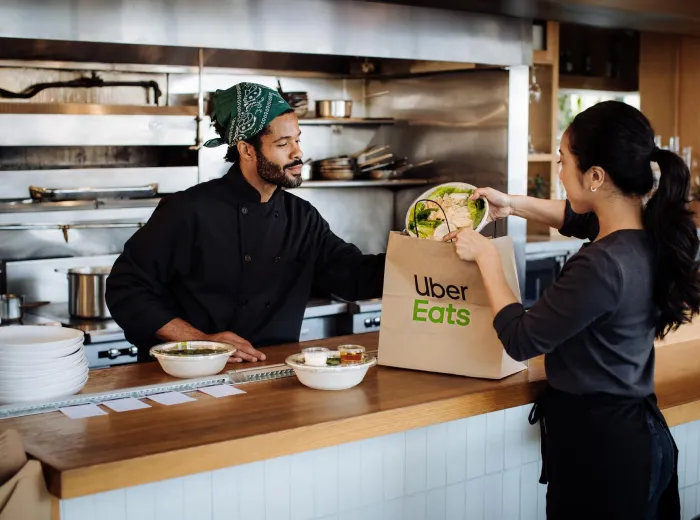

How Much Does It Cost to Open a Restaurant in Maine in 2025?
Opening a restaurant in Maine can be an exciting and rewarding venture, but it’s also a significant financial undertaking. Whether you’re dreaming of a cozy café in Camden, a seafood bistro in Portland, or a family-friendly diner in Bangor, understanding your startup costs is the first crucial step toward turning that vision into a profitable business.
From lease deposits and renovations to licensing, equipment, staffing, and inventory, the expenses add up quickly — and they vary depending on your location, restaurant type, and scale. The 2025 economic climate brings its own challenges too: rising wages, supply chain fluctuations, and increased demand for tech-savvy operations all impact your bottom line.
In this guide, we’ll break down every cost you should anticipate when launching a restaurant in Maine — not just the big-ticket items, but also the small (but essential) fees that often catch new owners off guard. You’ll also find sample budgets, money-saving tips, and real-world insights to help you make smarter financial decisions as you plan your opening.
Let’s dive into what it really takes — and what it truly costs — to open a restaurant in Maine this year.
Starting with the Big Picture — What Influences Your Costs?
Before diving into specific dollar amounts, it’s essential to understand the core variables that shape your total startup costs. The cost to open a restaurant in Maine can vary dramatically depending on your choices around concept, location, and business model. Here’s what drives those numbers up — or helps keep them under control.
The size and style of your restaurant
The type of restaurant you open heavily influences your cost structure. A 30-seat neighborhood café will have a very different budget than a 150-seat fine-dining seafood restaurant on the coast. Quick-service models tend to require less equipment, fewer staff, and simpler build-outs, whereas full-service venues need larger kitchens, décor investments, and ongoing training.
Typical restaurant styles and their approximate startup complexity:
- Coffee shop or bakery – Lower build-out and equipment needs
- Fast casual or takeout – Moderate build-out; streamlined kitchen
- Full-service dine-in – High staffing, equipment, and design costs
- Fine dining or concept-driven – High-end finishes, extensive menus, and premium expectations
The more elaborate your vision, the more capital you’ll need upfront — and in ongoing operations.
New build, renovation, or takeover?
How you acquire your space has a huge impact on your startup costs. If you’re building out a shell space, you’re paying for everything from HVAC to grease traps. Taking over an existing restaurant, on the other hand, could save you tens of thousands — assuming the infrastructure and permits are still valid.
Common options:
- Build from scratch: Most expensive route, but full creative control
- Renovate a commercial space: Moderate cost, permits often still required
- Take over an existing restaurant: Budget-friendly, but may include hidden repair costs or lease complications
Don’t forget to factor in due diligence and inspection costs before committing to a space.
Location matters — even within Maine
Costs can swing significantly depending on where in Maine you open your restaurant. Portland remains the state’s culinary capital — and one of the most expensive places to launch. Meanwhile, smaller towns or rural areas come with lower rents, but may also mean slower foot traffic and less year-round consistency.
Key location considerations:
- Urban vs. rural: Rent, labor pool, supplier access
- Seasonality: Coastal towns thrive in summer but quiet down in winter
- Tourism traffic: Some areas see huge summer influxes that can help cash flow
Choose a location that aligns not just with your budget, but also with your target market’s dining behavior and spending patterns.
Each of these big-picture factors sets the tone for your entire budget. Understanding them early helps you make informed, strategic decisions — not just emotional ones — as you move forward.
How Much for the Space? Lease, Purchase, and Build-Out
Securing the right space is one of the most expensive — and irreversible — decisions you’ll make when opening a restaurant. In Maine, whether you’re eyeing a prime corner in downtown Portland or a renovated barn near Bar Harbor, your location strategy will affect your startup budget, design timeline, and long-term profitability.
Let’s break down what you can expect to spend when it comes to leasing or buying, renovating, and equipping your restaurant space.
Commercial lease costs in Maine
Most new restaurant owners choose to lease their space. Lease rates in Maine vary depending on location, property condition, and size. Urban centers like Portland command higher rents, while smaller towns and suburban areas can offer better value.
Key costs to factor in:
- Monthly lease rate: Expect $15–$35 per square foot annually in high-demand areas
- Security deposit: Typically 1–3 months’ rent upfront
- Tenant improvements (TI): Some landlords contribute to build-outs — negotiate this
In addition to rent, be sure to budget for:
- CAM (Common Area Maintenance) fees
- Property taxes (if part of lease terms)
- Utilities and insurance (often tenant’s responsibility)
Negotiating favorable lease terms — with an option to renew — is critical to long-term success.
Renovation and build-out expenses
Unless you’re taking over a turnkey restaurant, you’ll need to customize your space to fit your kitchen layout, customer flow, and local code requirements. Build-out costs can vary widely depending on the starting condition of the space.
Typical build-out expenses include:
- Plumbing and electrical upgrades
- Commercial kitchen ventilation (hoods, grease traps, fire suppression)
- Restroom updates (ADA compliance)
- Flooring, wall finishes, and ceiling treatments
- HVAC and walk-in cooler installations
Estimated costs (2025 averages):
- Light renovations (paint, décor, lighting): $50–$100 per sq. ft.
- Full build-out (kitchen + dining): $200–$400 per sq. ft.
If you’re leasing, confirm with your landlord who owns the improvements once they’re installed.
Furniture, fixtures, and equipment (FF&E)
Beyond construction, you’ll need to fully furnish your space and equip both the kitchen and dining area. These are one-time capital costs but can vary depending on whether you buy new or used, or choose to lease equipment.
Front-of-house FF&E costs:
- Tables and chairs: $150–$300 per seat
- Host stand, bar stools, and booths
- Lighting fixtures and art
Back-of-house FF&E costs:
- Ranges, ovens, fryers, dishwashers, prep tables
- Refrigeration units (walk-in and under-counter)
- Fire suppression systems
You’ll also need to include installation, delivery, and potentially a certified inspection (for gas and hood systems) in your FF&E budget.
Total Cost Range for Securing and Outfitting a Space:
| Expense Category | Low Estimate | High Estimate |
|---|---|---|
| Lease deposit & setup | $6,000 | $18,000 |
| Build-out | $50,000 | $150,000+ |
| Furniture & fixtures | $10,000 | $40,000 |
| Kitchen equipment | $15,000 | $75,000 |
Whether you’re aiming for a minimalist space or an immersive dining experience, understanding and planning for these real estate and construction costs will make or break your launch timeline — and your overall budget.
Licenses, Permits, and Legal Fees You Can’t Avoid
No matter how small or simple your restaurant concept is, you can’t open your doors in Maine without first navigating a maze of legal requirements. These licenses and permits are not just red tape — they’re mandatory for operating legally, passing inspections, and avoiding costly shutdowns or penalties.
Below are the core documents and fees every restaurant owner in Maine should prepare for — ideally well before you invest in your space or equipment.
Business registration and local licenses
Before anything else, you’ll need to legally register your business entity with the state of Maine. Most restaurants form as an LLC or corporation to protect personal assets and create a solid foundation for tax and hiring purposes.
Steps and costs:
- Register your business with the Maine Secretary of State
- Filing fees range from $175–$250 depending on entity type
- Apply for a Federal Employer Identification Number (EIN) via IRS.gov — free of charge
- Check local city or town requirements for a general business license (fees vary)
Some municipalities may also require a certificate of occupancy or operating permit specific to commercial food service businesses.
Food establishment license
To serve food in Maine, you must obtain a Food Establishment License from the Maine Department of Health and Human Services (DHHS).
What it covers:
- Approval of your kitchen layout, food handling, and sanitation practices
- Required inspections by local health officers
- Covers both dine-in and takeout operations
Cost:
- Typically $100–$400 per year depending on seating capacity and risk category
- Apply through the Maine DHHS Health Inspection Program
You’ll need to pass a health inspection before opening and stay compliant with ongoing visits.
Liquor license (if applicable)
Planning to serve beer, wine, or cocktails? You’ll need a liquor license from the Maine Bureau of Alcoholic Beverages & Lottery Operations (BABLO) — and you’ll want to start this process early, as approval can take 6–8 weeks or longer.
Key license types:
- Class I: Liquor on premises (restaurants)
- Class III: Wine and malt only
- Class XI: Catering privileges
- Special event or seasonal licenses also available
Fees range:
- $220 to $2,200 depending on license type and municipality
- Local approval (city/town council) is typically required before state submission
- Application details available at Maine BABLO
Note: Every license must be renewed annually, and you’ll need server training certifications (e.g., ServSafe Alcohol).
Signage and occupancy permits
If you plan to display signage, especially outdoors or illuminated, your city or town may require a sign permit. Zoning laws will dictate the size, location, and lighting of your signage.
Other compliance items include:
- Occupancy permit: Ensures your space meets safety and capacity rules
- Fire marshal inspection: Required for new builds or changes to layout
- ADA compliance certification: To ensure accessibility for people with disabilities
Check with your local code enforcement office for a list of site-specific permit requirements — and budget $1,000–$3,000 for these miscellaneous legal items.
Summary of Common Legal Startup Costs:
| Permit or License | Estimated Cost |
|---|---|
| Business entity setup (LLC) | $175–$250 |
| Food establishment license | $100–$400 |
| Liquor license | $220–$2,200 |
| Signage & occupancy permits | $500–$2,000 |
| Fire inspection & safety | $250–$500 |
| ADA/Building compliance | $0–$1,000 (varies) |
Getting licensed isn’t just a box to check — it’s the legal foundation for your restaurant. Starting the application process early, staying organized, and working with a local licensing consultant (if needed) can save you months of delays and avoidable expenses.
Your Kitchen Setup — A Huge Line Item
For any restaurant, the kitchen is where the magic happens — but building one isn’t cheap. Your kitchen setup will likely be one of the largest single expenses in your entire startup budget. From cooking equipment to refrigeration, prep stations to safety systems, every decision impacts your workflow, efficiency, and compliance.
Let’s take a closer look at what goes into a commercial kitchen setup, how to budget for it, and ways to avoid overspending without sacrificing quality.
Buying vs. leasing commercial kitchen equipment
One of the first decisions you’ll face is whether to buy or lease your equipment. Each approach has trade-offs in terms of upfront cost, flexibility, and maintenance responsibilities.
Pros of buying:
- Long-term cost savings (no monthly payments)
- Ownership = resale value
- Full control over quality and brand
Pros of leasing:
- Lower upfront investment
- Maintenance may be included
- Easier to upgrade as your business grows
Leasing can be a smart move for expensive items like refrigeration or dishwashers, especially if cash flow is tight during the early months.
Commercial appliances and estimated prices
Outfitting a professional kitchen requires more than just a stove and oven. You’ll need durable, code-compliant equipment that can handle high-volume cooking — all installed by certified professionals.
Estimated 2025 equipment prices:
- Commercial range: $3,000–$8,000
- Griddle or flat-top: $1,500–$4,000
- Deep fryer: $1,000–$3,000 each
- Commercial hood & ventilation system: $10,000–$25,000
- Walk-in cooler: $7,000–$15,000
- Ice machine: $2,000–$5,000
- Commercial dishwasher: $3,000–$10,000
Don’t forget to account for:
- Delivery and installation fees
- Ventilation and fire suppression system integration
- Electrical and plumbing modifications
Smallwares and essentials
Many first-time owners forget to budget for smallwares — but they add up fast. These are the day-to-day tools your staff needs to prep, cook, plate, and clean efficiently.
Common smallwares and costs:
- Chef knives, peelers, ladles, spatulas
- Pots, pans, baking trays, mixing bowls
- Cutting boards and storage containers
- Food thermometers and timers
- Speed racks, sheet pans, cambros, bins
Estimated budget:
Plan to spend $5,000–$15,000 depending on your menu complexity and staff size.
Pro tip: Don’t buy everything at once. Start with the essentials and add to your inventory as your team settles into a rhythm.
Total Kitchen Setup Budget Range:
| Item Category | Estimated Range |
|---|---|
| Major appliances | $30,000–$80,000 |
| Hood and ventilation system | $10,000–$25,000 |
| Walk-in refrigeration | $7,000–$15,000 |
| Dishwasher system | $3,000–$10,000 |
| Smallwares & tools | $5,000–$15,000 |
| Installation & compliance | $5,000–$10,000 |
When planning your kitchen, think operationally — not just aesthetically. Every step your staff takes costs you money over time. Invest in a layout that supports your menu, minimizes waste, and allows for speed and safety. And always get a second quote before purchasing or installing anything permanent.
Staffing Costs — Before You Even Open the Doors
Hiring a great team is one of the most critical steps in launching your restaurant — and one of the most expensive. Even before you serve your first guest, you’ll need to invest in recruitment, onboarding, training, and payroll setup. In Maine, rising wages and a competitive labor market in 2025 mean that staffing must be a carefully planned part of your startup budget.
Let’s break down the pre-opening staffing expenses you should expect — and how to manage them wisely.
Pre-opening hiring and training
Your restaurant team doesn’t just appear overnight. Recruiting and preparing them takes time, money, and energy. You’ll need a solid crew in place at least 2–4 weeks before opening to ensure they’re fully trained and aligned with your service expectations.
Roles you’ll likely hire pre-opening:
- Head chef or kitchen manager
- Line cooks and prep cooks
- Servers, hosts, bussers
- General manager or FOH manager
- Dishwashers or cleaners
Pre-opening costs include:
- Job ads on platforms like Indeed or Poached
- Interviewing and background checks
- Uniforms and onboarding materials
- Staff training (manuals, time on the clock, practice runs)
- Mock service and soft openings
Estimated budget: $5,000–$20,000 depending on team size and training depth
Pro tip: Schedule paid training shifts and soft launch events to work out service kinks before the grand opening.
Labor laws and wage requirements in Maine
Labor costs in Maine are on the rise. As of 2025, the state minimum wage is indexed annually based on the cost of living, and employers must also comply with tip credit laws and overtime rules.
Wage-related basics:
- Minimum wage (2025 forecast): Approx. $14.15–$14.50/hr
- Tipped wage allowance: Employers may take a tip credit, but total pay must meet or exceed minimum wage
- Overtime pay: Time-and-a-half for hours worked beyond 40/week
Important legal obligations:
- Provide required break times
- Maintain accurate time records
- Post labor law notices visibly in the workplace
Noncompliance can lead to heavy fines, so make sure you’re up to date with Maine DOL regulations.
Payroll setup and HR compliance
Even before your first payroll run, you’ll need to have systems and protections in place to manage your employees legally and efficiently.
Key requirements and services:
- Register with the IRS and Maine Revenue Services for tax withholding
- Set up unemployment insurance through Maine Department of Labor
- Purchase workers’ compensation insurance (mandatory in Maine)
- Choose a payroll provider or accountant — expect $100–$250/month for basic services
Optional but recommended:
- Employee handbook
- Time-tracking and scheduling software
- HR services or legal consultation for employment compliance
Sample Pre-Opening Staffing Budget:
| Category | Estimated Cost |
|---|---|
| Job listings & recruitment | $500–$2,000 |
| Onboarding & training | $3,000–$10,000 |
| Uniforms & staff gear | $500–$2,000 |
| Payroll setup & software | $500–$1,500 |
| Workers’ comp insurance | $1,000–$3,000+ |
Staffing costs aren’t just about getting people in the door — they’re about creating a well-trained team that represents your brand, protects your business, and builds a culture from day one. Don’t skimp here. A great launch starts with a crew that’s ready to deliver.
Marketing and Tech Setup — Don’t Launch Blind
You might have the perfect location, an incredible chef, and a gorgeous interior — but if no one knows you exist, none of that will matter. Marketing and technology aren’t just post-launch luxuries anymore — they’re startup essentials. In 2025, successful Maine restaurant openings rely on a strong digital presence and the right tech tools from day one.
Here’s what to budget for and prioritize to make sure your restaurant gets seen, heard, and remembered.
Branding and design
Your brand identity sets the tone for every customer interaction — from your menu and website to your signage and social media. You want to look professional, cohesive, and memorable.
Startup branding costs may include:
- Logo and brand identity package: $500–$3,000
- Menu design (print and digital): $200–$1,000
- Exterior signage and window graphics: $1,000–$5,000
- Business cards, flyers, or table tents
Work with a local designer or creative agency who understands hospitality — or use platforms like 99designs if you’re bootstrapping.
Digital tools you’ll need
Restaurant tech has come a long way — and today’s diners expect it. Choosing the right tools early helps streamline operations and avoids headaches later.
Must-have tech tools:
- POS system: Square, Toast, Lightspeed, etc. ($1,000–$5,000 setup + monthly fees)
- Online menu system: Consider platforms like Menuviel for QR-based menus, dietary badges, and multi-language support
- Reservation or waitlist software: OpenTable, Resy, or Yelp Waitlist
- Wi-Fi and secure network setup
- Customer feedback or loyalty system
Other helpful tools:
- Accounting and payroll software (QuickBooks, Gusto)
- Inventory management systems
- Security cameras and alarm systems
Most platforms operate on a monthly subscription model — expect to spend $200–$800/month on software and digital services once operational.
Grand opening and local PR
Your opening week is your best chance to make a splash — and Maine’s tight-knit communities love to support new local businesses, especially when they’re invited in the right way.
Smart launch strategies:
- Offer a soft opening for friends, family, and community influencers
- Send press releases to local newspapers, food bloggers, and radio stations
- Partner with nearby businesses for cross-promotions
- Run a small ad campaign on Instagram and Facebook (budget: $300–$1,000)
- Hand out menus, coupons, or branded swag in your neighborhood
Use social media to build anticipation before your doors open — share your story, teaser shots of the menu, and behind-the-scenes videos to build momentum.
Startup Marketing & Tech Setup Budget Summary:
| Item | Estimated Cost |
|---|---|
| Logo & brand design | $500–$3,000 |
| Menu design (print/digital) | $200–$1,000 |
| Signage & window graphics | $1,000–$5,000 |
| POS & tech setup | $1,000–$5,000+ |
| Online menu / QR system | $20–$100/month |
| Website & domain | $500–$2,500 |
| Launch marketing & ads | $500–$2,000+ |
Don’t treat marketing and tech as afterthoughts — treat them as investments in visibility, professionalism, and efficiency. When done right, they not only help you launch strong but also give you tools to scale, adapt, and thrive long after opening day.
Initial Inventory and Supplier Contracts
Before you serve your first guest, you’ll need a fully stocked kitchen, bar (if applicable), and storage room — and that means placing your first round of inventory orders. This initial inventory load is typically more expensive than your ongoing weekly purchases because you’re starting from zero. You’ll also need to spend time selecting reliable suppliers and setting up proper purchasing systems to avoid waste and stockouts.
Here’s how to budget for your first big inventory order and what to expect when establishing supplier relationships in Maine.
Stocking your pantry and bar
Your opening inventory should reflect your menu — not your wish list. Over-ordering leads to spoilage and waste, while under-ordering puts your team in panic mode. Work closely with your chef or kitchen manager to develop precise par levels for each item.
Initial kitchen inventory typically includes:
- Fresh produce, dairy, and proteins (fish, poultry, beef, etc.)
- Dry goods (flour, rice, pasta, sugar, spices)
- Sauces, oils, and condiments
- Frozen goods and bulk staples
- Breads and baked items (unless made in-house)
For restaurants with a bar:
- Wine, beer, and spirits (based on your menu and liquor license)
- Mixers, garnishes, syrups, and bar tools
Budget guidelines:
- Kitchen inventory: $4,000–$10,000
- Bar inventory: $2,000–$6,000 (depending on size and selection)
Pro tip: Don’t try to stock every menu item in full bulk quantities. Order conservatively at first — you’ll learn what moves fast and what doesn’t.
Cleaning supplies and disposables
Health inspections and day-to-day operations require more than just food. You’ll also need a wide range of cleaning and consumable products to meet sanitation standards and maintain a smooth workflow.
Checklist of must-haves:
- Sanitizers, degreasers, and cleaning agents
- Mop buckets, brooms, and dish brushes
- Gloves, aprons, hairnets, and first aid kits
- Trash liners, napkins, to-go containers, foil, plastic wrap
- Dishwasher detergent and sanitizer
Estimated initial spend: $1,000–$3,000
Using a local janitorial supply vendor or a foodservice wholesaler like Sysco or US Foods can streamline these purchases into your main ordering process.
Getting vendor-ready
Vendor setup isn’t just about placing orders — it’s about creating reliable, repeatable systems for inventory delivery, quality control, and payment.
Steps to prepare:
- Research and compare suppliers (local vs. national)
- Set up credit accounts or net terms (many vendors offer Net 7–30 days)
- Designate receiving hours and storage procedures
- Train staff on how to inspect and handle deliveries
Types of suppliers to establish:
- Produce and dry goods
- Meat and seafood
- Dairy and eggs
- Alcohol and beverage distributors
- Paper goods and cleaning supplies
Whenever possible, try to source from local farms and producers — not only for freshness but also for community goodwill and potential marketing value.
Sample Opening Inventory Budget:
| Category | Estimated Cost |
|---|---|
| Kitchen food stock | $4,000–$10,000 |
| Alcohol and bar supplies | $2,000–$6,000 |
| Cleaning products | $1,000–$3,000 |
| Disposables & packaging | $500–$1,500 |
| Vendor setup admin time | ~$0–$500 |
Getting your opening inventory right is a balancing act — enough to run full service confidently, but not so much that you end up tossing expired goods. Treat your supplier relationships like long-term partnerships and take time to negotiate terms, build trust, and set expectations early on. It’ll pay off every week after your grand opening.
Monthly Operating Expenses to Plan For
Once your restaurant is open, the real test begins: managing your cash flow while keeping customers happy and operations smooth. While startup costs get the spotlight, it’s your monthly operating expenses that will determine whether your restaurant stays profitable — or struggles to survive.
Let’s walk through the major recurring expenses you should plan for in Maine, with realistic benchmarks and insights to help you forecast and control costs.
Rent, utilities, and insurance
These fixed or semi-fixed costs form the foundation of your monthly financial obligations. Even during slow periods, they don’t go away — which makes them crucial to plan for accurately.
Typical ranges in Maine (2025 estimates):
- Rent: $2,500–$10,000/month depending on location and size
- Electricity: $800–$2,500/month (kitchen and HVAC systems consume a lot)
- Gas and water: $300–$800/month combined
- Internet & phone: $100–$300/month
- Insurance (liability, property, etc.): $300–$1,200/month
Pro tip: Bundle utilities where possible and use energy-efficient equipment to reduce long-term overhead.
Payroll and benefits
Labor is often your largest monthly expense, especially for full-service restaurants. In Maine, higher wages and seasonal employment shifts require careful planning.
Key components:
- Hourly wages (back and front of house)
- Salaries (GM, kitchen manager, chef)
- Payroll taxes (Social Security, Medicare, unemployment)
- Workers’ compensation and other benefits
Typical labor cost as a percentage of revenue:
30%–35% (may be higher in early months)
Monthly cost for a small restaurant (10–15 staff):
$15,000–$40,000/month depending on wage structure and schedule volume
Marketing and software subscriptions
Even after your grand opening, you’ll need to keep marketing consistently to bring in new guests and encourage repeat visits. And most restaurant tech tools operate on a monthly subscription model.
Examples of recurring costs:
- Website hosting and domain: $20–$50/month
- Online menu system (e.g., Menuviel): $10–$20/month
- POS and payment processing fees: $100–$500/month + transaction % fees
- Social media ads or digital marketing campaigns: $200–$1,000/month
- Email marketing or loyalty platforms: $50–$150/month
Choose tools that integrate well with each other and scale as you grow.
Inventory replenishment
Food and beverage costs will fluctuate based on sales, seasonality, and vendor pricing. Successful restaurants monitor these numbers closely and adjust menu pricing or portions as needed.
Typical monthly food and beverage spend:
- Food cost (COGS): 25%–35% of food revenue
- Beverage cost: 18%–25% of beverage revenue
Monthly inventory cost for a mid-size restaurant:
$8,000–$25,000/month depending on volume and menu complexity
Ways to manage this:
- Weekly ordering schedules with par levels
- Recipe costing to control portion sizes
- Rotate seasonal or low-cost specials
Summary of Monthly Operating Expenses:
| Category | Estimated Monthly Cost |
|---|---|
| Rent | $2,500–$10,000 |
| Utilities (electric/gas) | $1,000–$3,000 |
| Insurance | $300–$1,200 |
| Payroll & taxes | $15,000–$40,000 |
| Inventory restocking | $8,000–$25,000 |
| Software & subscriptions | $300–$1,000 |
| Marketing & advertising | $200–$1,000 |
| Waste removal & linens | $300–$800 |
Managing monthly expenses is all about predictability and control. Set up a rolling cash flow forecast, compare it to your actuals every month, and don’t hesitate to pivot — whether it’s adjusting your staffing levels or renegotiating with suppliers. The more proactive you are, the better your restaurant’s chances of staying profitable long-term.
Sample Budget: Opening a Small Restaurant in Maine
To make all these numbers easier to digest, let’s put them into a real-world context. Below is a sample startup budget for a small, independently owned restaurant in Maine — think a 40–60 seat bistro or casual dining spot in a mid-sized town like Brunswick, Lewiston, or Biddeford.
This sample assumes:
- You’re leasing the space
- You’re doing a moderate renovation (not a full gut)
- You’ll serve a mix of dine-in and takeout
- You’ll run with a lean team and limited menu at first
Sample Startup Cost Breakdown
| Category | Low Estimate | High Estimate |
|---|---|---|
| Lease deposit + 3 months rent | $6,000 | $18,000 |
| Build-out & renovations | $25,000 | $100,000+ |
| Kitchen equipment | $15,000 | $75,000 |
| Furniture & décor | $10,000 | $40,000 |
| Licenses & permits | $2,000 | $8,000 |
| Initial food & beverage inventory | $6,000 | $16,000 |
| Cleaning & disposable supplies | $1,500 | $3,000 |
| Staff hiring & pre-opening payroll | $7,500 | $20,000 |
| POS system & tech setup | $2,000 | $6,000 |
| Website & digital menu tools | $500 | $2,500 |
| Marketing & launch promotions | $1,500 | $5,000 |
| Professional fees (legal, HR, accounting) | $2,000 | $5,000 |
| Contingency fund | $5,000 | $15,000 |
| 🚀 Total Estimated Startup Cost | $94,000 | $313,500+ |
Notes and Assumptions:
- Owner salary is not included here — plan to cover your personal expenses separately for the first 6–12 months.
- Franchise fees are not included — this is for an independent restaurant.
- Contingency is a must. Unexpected costs (plumbing issues, failed inspections, delays) happen in nearly every project.
- Inventory and payroll assume you’re stocked and staffed for about two weeks before launch.
This sample budget isn’t meant to scare you — it’s meant to prepare you. Many successful restaurants in Maine have launched for under $150,000 with smart planning and cost control. On the flip side, underestimating your budget is one of the top reasons restaurants struggle out of the gate. It’s better to raise or reserve more than you think you’ll need and open with confidence.
Ways to Reduce Costs Without Sacrificing Quality
Opening a restaurant doesn’t have to mean breaking the bank — as long as you’re strategic. Cutting costs doesn’t mean cutting corners. With the right approach, you can launch a polished, professional operation without overspending. The key is knowing where you can trim fat and where it’s worth paying full price.
Here are some tried-and-true ways to reduce your startup costs while still delivering a great guest experience.
Buy used or lease key equipment
Brand-new kitchen equipment comes at a premium. In many cases, used or leased items offer the same functionality at a fraction of the cost.
Smart strategies:
- Buy gently used appliances from restaurant auctions or supply resellers
- Lease expensive items like dish machines or refrigeration to reduce upfront costs
- Prioritize new purchases only for critical items with short lifespans or intensive daily use
Pro tip: Always have used equipment professionally inspected before buying.
Open in phases — soft launch strategy
You don’t need to open at full throttle on day one. Many successful restaurants start small, then scale up gradually as revenue grows.
Phased rollout ideas:
- Begin with dinner service only, then add lunch or brunch
- Delay bar service until you’re fully licensed and staffed
- Keep your opening menu tight, with 10–15 solid dishes, and expand later
A soft opening also allows your team to practice under less pressure, reducing costly mistakes.
Share kitchen space or use a commissary
If your concept allows it — especially for bakeries, ghost kitchens, or delivery-focused models — consider launching from a shared commercial kitchen.
Benefits include:
- Lower rent and utilities
- Shared cleaning and maintenance responsibilities
- Existing code-compliant infrastructure (hoods, grease traps, etc.)
While this doesn’t work for every full-service model, it’s a great cost-saving option for first-time or niche operators.
Streamline your menu
A bloated menu leads to higher food costs, more training, and increased waste. A lean, focused menu improves both profitability and customer clarity.
Menu tips:
- Use cross-utilization: one protein or sauce can appear in multiple dishes
- Feature seasonal ingredients that are readily available and affordable in Maine
- Start with fewer dishes, but do them exceptionally well
Not only does this reduce startup inventory, but it also speeds up kitchen training and improves quality control.
Negotiate better terms with landlords and vendors
Everything is negotiable — especially if you’re well-prepared and understand your leverage. Don’t accept boilerplate terms without reviewing them line by line.
What to negotiate:
- Free rent during build-out period (1–3 months is common)
- Tenant improvement allowances (TI funds)
- Net payment terms with suppliers (Net 15, 30, or 45 days)
- Bulk purchase discounts from wholesalers
A few key negotiations can shave thousands off your startup total.
Bonus Ideas:
- DIY where possible – Paint walls, assemble furniture, or design menus yourself
- Tap into local programs – Look for grants, tax credits, or business incentives in Maine
- Use interns or students – Culinary and marketing students often seek hands-on experience
Saving money isn’t about being cheap — it’s about being smart. With thoughtful planning and a willingness to adapt, you can create a high-quality restaurant experience while keeping your startup costs under control. And that’s the kind of financial discipline that sets you up for long-term success.
Funding Options for Restaurant Startups in Maine
Opening a restaurant requires capital — often more than most new owners expect. Whether you’re aiming for a small café in Bangor or a full-service seafood spot in Portland, securing the right funding mix is essential to getting off the ground and staying afloat during the early months.
Fortunately, Maine offers several funding pathways for entrepreneurs. From traditional loans to state-backed grants, here’s a rundown of the most viable financing options for restaurant startups in 2025.
Personal savings and partnerships
Most independent restaurants begin with personal investment — either self-funded or supported by family, friends, or business partners.
Common approaches include:
- Tapping into savings, 401(k), or home equity (with caution)
- Forming a partnership and dividing initial investment shares
- Offering equity to early investors in exchange for capital
Pros:
- Full control or shared ownership with trusted partners
- No monthly repayments if equity-based
Cons:
- High personal financial risk
- Potential for strained personal relationships if things go south
Only invest what you can afford to lose — and put everything in writing from the start.
SBA loans and traditional bank financing
The U.S. Small Business Administration (SBA) provides loan programs that are ideal for capital-heavy ventures like restaurants. In Maine, many local banks work with SBA-backed loans to help reduce risk and offer more favorable terms to new operators.
Popular loan options:
- SBA 7(a) Loan: Great for startup capital, equipment, and working capital (up to $5 million)
- SBA Microloan: Ideal for smaller needs (up to $50,000)
Benefits:
- Competitive interest rates (typically 6%–10%)
- Long repayment terms (up to 10–25 years)
- Can be used for everything from build-out to inventory
What you’ll need:
- Detailed business plan and financial projections
- Good personal credit
- 10%–20% owner equity injection
Check with community-focused banks or credit unions like Camden National Bank or Machias Savings Bank, which are often more supportive of small business applicants.
Maine-specific small business grants
While grants are harder to secure than loans, they do exist — especially in Maine, where small business growth is actively supported by economic development programs.
Potential resources:
- FAME (Finance Authority of Maine): Offers loan guarantees, direct loans, and targeted programs
→ https://www.famemaine.com/business/programs/ - MTI (Maine Technology Institute): For innovative food concepts or tech-integrated operations
→ https://www.mainetechnology.org/ - Municipal development grants: Some cities offer funding or rent relief for downtown revitalization
Tips for applying:
- Be specific about your business’s local impact (job creation, revitalization, sourcing)
- Prepare detailed documentation — many programs are competitive
Grants typically won’t fund your entire launch, but they can be powerful supplemental tools when paired with other financing.
Crowdfunding or community investors
If you’ve built a strong network or following, crowdfunding can be a creative and community-driven way to raise capital. It’s especially effective in Maine’s tight-knit towns where local support means everything.
Platforms to explore:
- Kickstarter or Indiegogo: Pre-sell meals, merch, or gift cards to fundraise
- Honeycomb Credit: Debt crowdfunding specifically for small businesses
- Mainvest: Offers revenue-sharing investment opportunities for food businesses
Advantages:
- Builds community buy-in before you open
- Less reliance on banks or high-interest credit
- Can double as a marketing tool
Be transparent and realistic in your goals. Deliver on your promises and maintain good communication with backers.
Sample Funding Mix for a $150,000 Startup:
| Funding Source | Contribution |
|---|---|
| Owner savings | $30,000 |
| SBA-backed loan | $75,000 |
| Local development grant | $10,000 |
| Investor/partner equity | $25,000 |
| Crowdfunding campaign | $10,000 |
Securing funding isn’t just about getting money — it’s about choosing the right partners, structures, and terms that will allow your restaurant to grow. Be strategic, diversify your sources, and don’t be afraid to start smaller and scale as revenue allows. With the right financial foundation, your restaurant dream in Maine can become a sustainable reality.
Final Checklist Before You Commit
Before you sign a lease, hire your first employee, or order that $10,000 walk-in fridge — take a moment to pause and assess. Opening a restaurant is exciting, but it’s also a long-term commitment that requires financial readiness, regulatory awareness, and operational clarity.
Here’s a final checklist to help you make sure you’ve covered your bases and are truly ready to move forward with confidence.
✅ Financial Preparedness
- Have you created a detailed startup budget — with a 10–15% buffer for surprise costs?
- Do you have enough working capital to cover at least 3–6 months of operating expenses after opening?
- Have you projected realistic revenue and expense scenarios — both best- and worst-case?
- Did you confirm all funding sources (loans, grants, personal savings, partners)?
- Are you aware of your break-even point and how long it may take to reach it?
✅ Legal and Licensing
- Is your business entity legally registered in Maine?
- Have you applied for or received your food service license?
- If serving alcohol, is your liquor license approved or in process?
- Did you check zoning restrictions and obtain local permits for signage, occupancy, etc.?
- Are you compliant with labor laws, wage regulations, and insurance requirements?
✅ Location and Space Readiness
- Have you compared lease terms, hidden fees, and build-out responsibilities?
- Does your space meet code requirements for ventilation, fire safety, and ADA compliance?
- Is your build-out timeline realistic, and do you have contractor quotes in writing?
- Do you have a contingency plan in case construction is delayed?
✅ Operational Systems
- Is your POS system selected, tested, and integrated with your kitchen workflow?
- Do you have a QR-based menu or online system for guests to view your offerings?
- Are vendor relationships and delivery schedules in place for food, alcohol, and cleaning supplies?
- Have you defined roles, responsibilities, and a training plan for staff?
✅ Marketing and Launch Planning
- Is your website live, and does it reflect your brand professionally?
- Have you set up social media channels with pre-launch content?
- Do you have a launch plan — soft opening, grand opening, or phased rollout?
- Have you budgeted for ads, PR, or promotional events to attract early traffic?
✅ Personal Readiness
- Do you have personal financial reserves or a backup plan in case the business takes longer to ramp up?
- Have you discussed time commitments with your family or co-owners?
- Are you mentally prepared for the long hours, high stress, and slow early days?
Launching a restaurant is a bold move — but it should never be a blind leap. With this checklist as your compass, you’ll avoid many of the painful mistakes that sink promising ventures before they ever hit their stride. Take the time to double-check, ask for advice, and refine your plan until it’s bulletproof.
Your future self — and your guests — will thank you.
Key Takeaways
If you’re planning to open a restaurant in Maine in 2025, understanding the full scope of startup and operating costs is essential for launching with confidence and longevity.
- Startup costs typically range from $90,000 to over $300,000, depending on concept, location, and build-out needs.
- Major expenses include lease deposits, kitchen equipment, renovations, permits, staffing, and initial inventory.
- Licensing and legal compliance are non-negotiable — expect to budget $2,000–$8,000 for essential permits and inspections.
- Ongoing monthly costs like rent, payroll, utilities, and food inventory require strong cash flow planning.
- Funding options include personal investment, SBA loans, Maine-specific grants (like FAME programs), and community-backed crowdfunding.
- You can reduce costs without lowering quality by leasing equipment, opening in phases, simplifying your menu, or negotiating vendor terms.
- Your marketing and tech setup are as important as your food — launch with a strong digital presence and operational tools in place.
- Final readiness means checking off financial, legal, operational, and personal milestones before you commit.
With realistic budgeting, smart cost control, and the right mix of strategy and passion, opening a restaurant in Maine is not just possible — it’s a powerful opportunity to create something lasting and profitable.
Frequently Asked Questions About Restaurant Startup Costs in Maine
Thinking of opening a restaurant in Maine and unsure what to expect financially? Below are some of the most commonly asked questions by aspiring restaurant owners. These answers will help you plan better, avoid surprise expenses, and confidently move forward with your restaurant dream.
How much money do I need to open a small restaurant in Maine?
Opening a small restaurant in Maine typically costs between $150,000 and $350,000, depending on the location, size, lease type, and design. This includes initial rent, renovation, kitchen equipment, permits, and working capital.
What are the biggest startup expenses when launching a restaurant in Maine?
The largest costs are usually:
- Leasehold improvements & construction ($50,000–$150,000)
- Kitchen equipment ($30,000–$100,000)
- Licensing and permits (up to $5,000)
- Initial food & beverage inventory ($5,000–$20,000)
- Marketing & signage ($5,000–$15,000)
Do I need to pay for permits and licenses before opening my restaurant in Maine?
Yes, you must secure all required permits before opening. Expect to pay for:
- Business license
- Food establishment license
- Health inspection fee
- Liquor license (if applicable)
Permit costs can range from $1,000 to $5,000 depending on your concept and location.
How much does it cost to get a liquor license for a restaurant in Maine?
A restaurant liquor license in Maine costs between $220 and $2,200 annually, depending on the type of alcohol served and seating capacity. There are also application and background check fees involved.
Can I reduce restaurant startup costs in Maine by buying an existing restaurant?
Yes. Buying an existing restaurant can significantly reduce startup costs, as the kitchen setup, permits, and infrastructure may already be in place. However, you’ll still need to invest in rebranding, menu updates, and possibly renovations.
ABOUT THE AUTHOR
Erkin Coban
Your Customers Deserve The Best
And we got Menuviel for them.
The fastest and easy-to-use online QR menu with 12+ unique features. Choose Menuviel and elevate your service quality to the next level.
Use free for the first 30 days.

In This Article

Free AI Tools for Restaurants
TRY NOW ➜

Collect positive Google reviews
You can boost your restaurant’s credibility by effortlessly gathering Google reviews directly through your menu.





